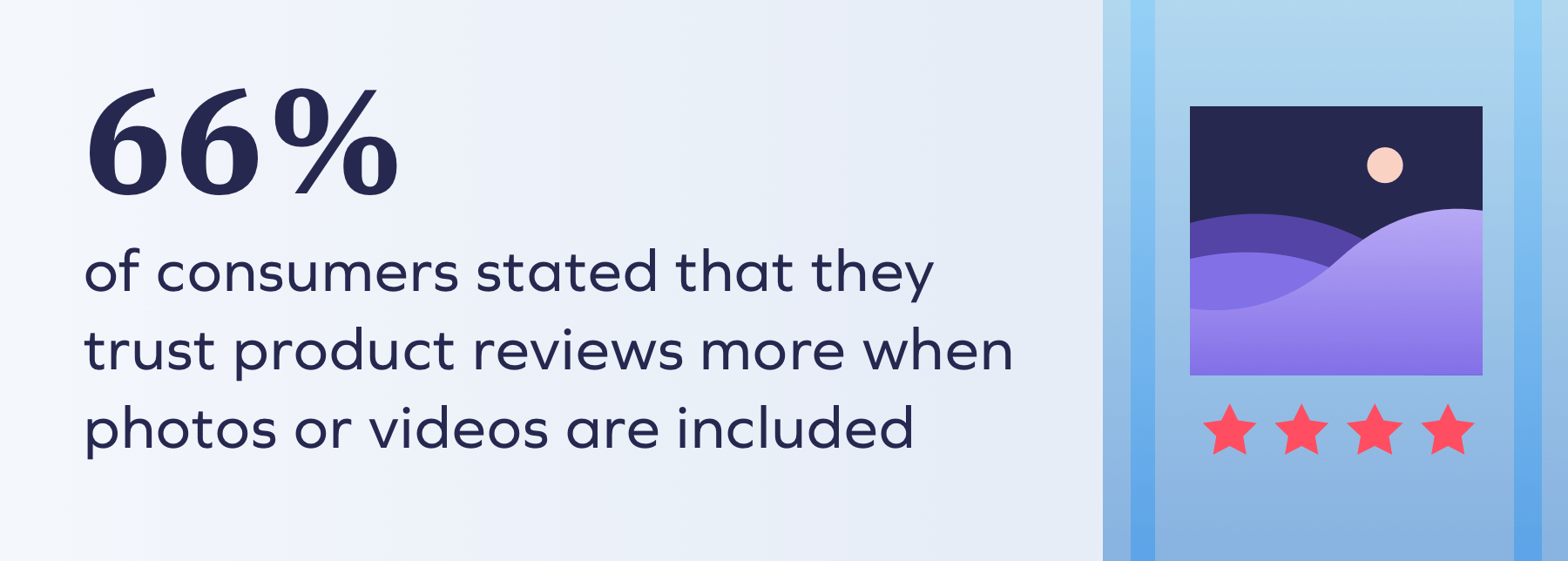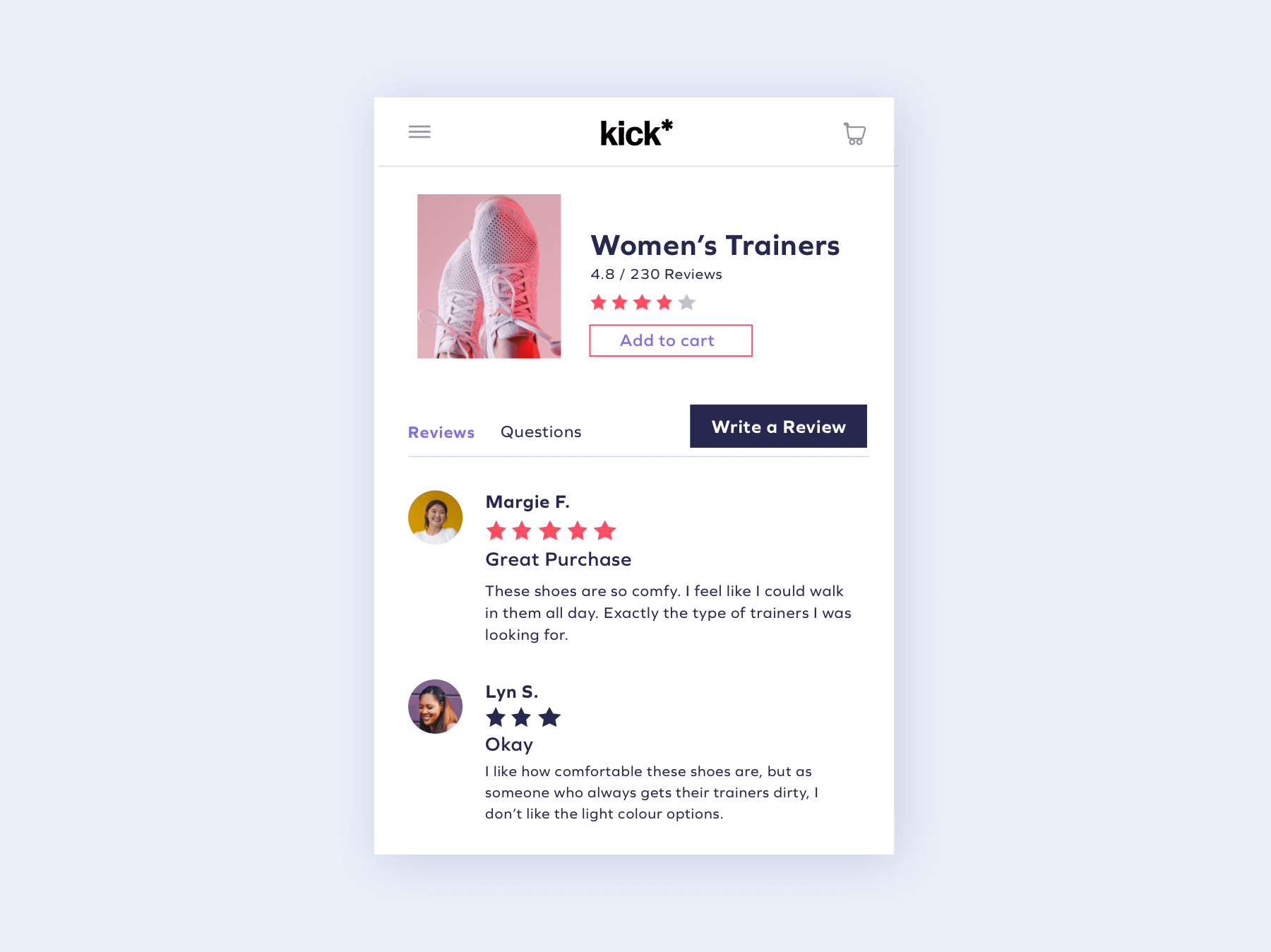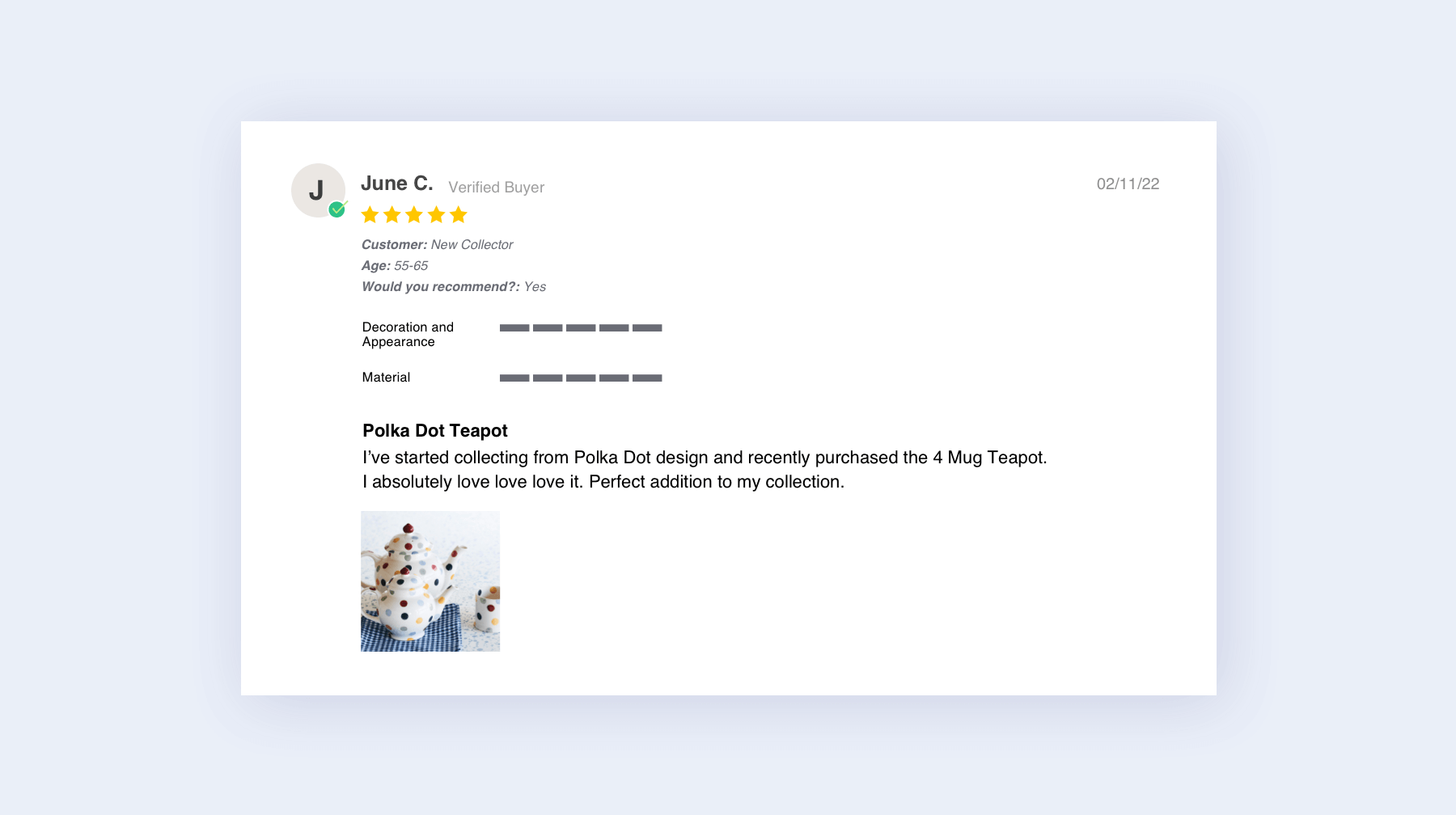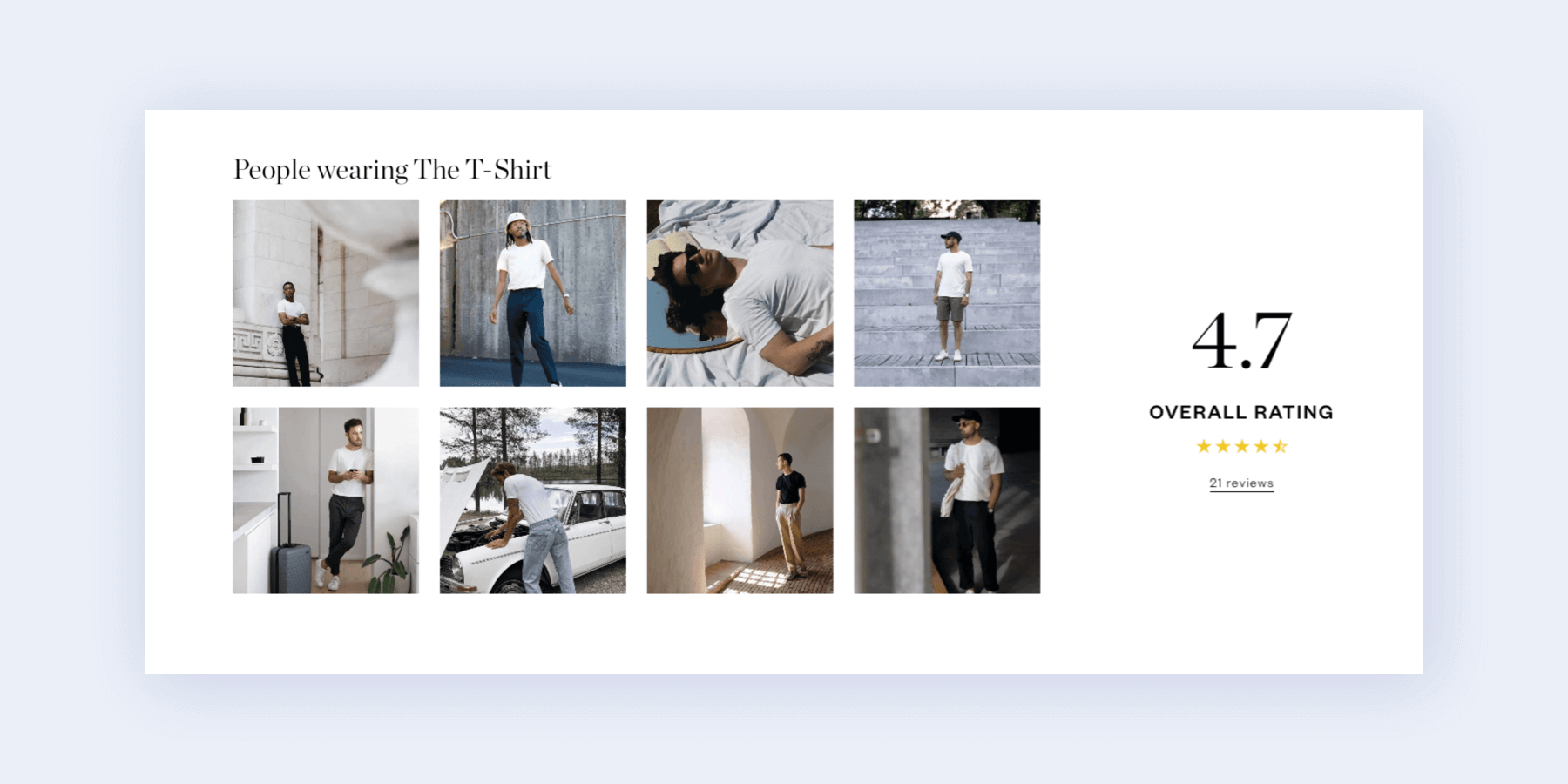Reviews can be very influential for shoppers along the path to purchase. When shoppers are searching for a particular product, reviews can help them decide whether that product will meet their needs. From there, they’ll either make a purchase or keep shopping around, and there are a few key factors within this decision-making process.
Photo and videos reviews inspire more trust
When photos and videos are included alongside written reviews, they can influence a purchase decision. Customer content, such as photos and videos, show new site visitors that you’re a reputable brand they can trust. In fact, about 66% of shoppers stated that they trust product reviews more when photos or videos are included.

And when shoppers see positive reviews from people who look like them — with similar body, skin, or hair types — it can also sway them to purchase the item. Our results showed that 45% of shoppers say that it will always impact their purchase decision.
Positive and negative reviews help to showcase authenticity
Our survey also indicated that about 32% of shoppers always search for negative reviews before making a purchase and 50% of shoppers will actively search for negative reviews from time to time.
This may be because bad reviews can make your good reviews look more authentic, which will lead your customers to trust your brand more. Actively searching for negative reviews also allows customers to weed out any negative details that may not be relevant to them. For example, let’s say that someone left a negative review about the colour of a pair of shoes. If the shopper reading the review is more concerned about comfort than colour, reading those negative reviews will help them make the purchase decision that best fits their needs.

But when it comes to seeing both positive and negative reviews on a brand’s site, 23% of shoppers are very likely to still trust a brand while approximately 68% are somewhat likely to still trust the brand. Because of this, responding to your negative reviews is vital to reinforcing trust with your shoppers.
However, simply responding to your reviews is not enough as consumers are still a bit wary. While almost 48% of the respondents stated that responding to negative reviews would positively impact a purchase decision, 44% stated that it might positively influence a purchase decision. Because of this, in addition to responding to your negative reviews, it’s also important to analyse the negative feedback and act on it in order to improve the customer experience.
When health brand Ruohonjuuri receives negative feedback, instead of seeing it as a misstep, they see it as additional insights that could help them improve the quality of their products. And while making changes to their products, they’re also improving the overall shopping experience for their customers.
Outdoor apparel brand ACAI Outdoorwear has also made strides to turn customer feedback into actionable insights. For example, when their loyal customers submitted feedback about the length of their Trek Shorts, the ACAI team took action and created longer shorts. Details about the length of a pair of shorts, colour preferences, and the fit of items are all valuable to ACAI as it allows them to make the kind of improvements that strengthen their customers’ trust in their brand.













